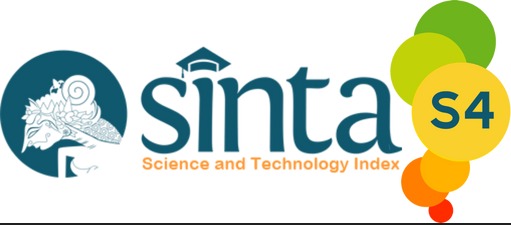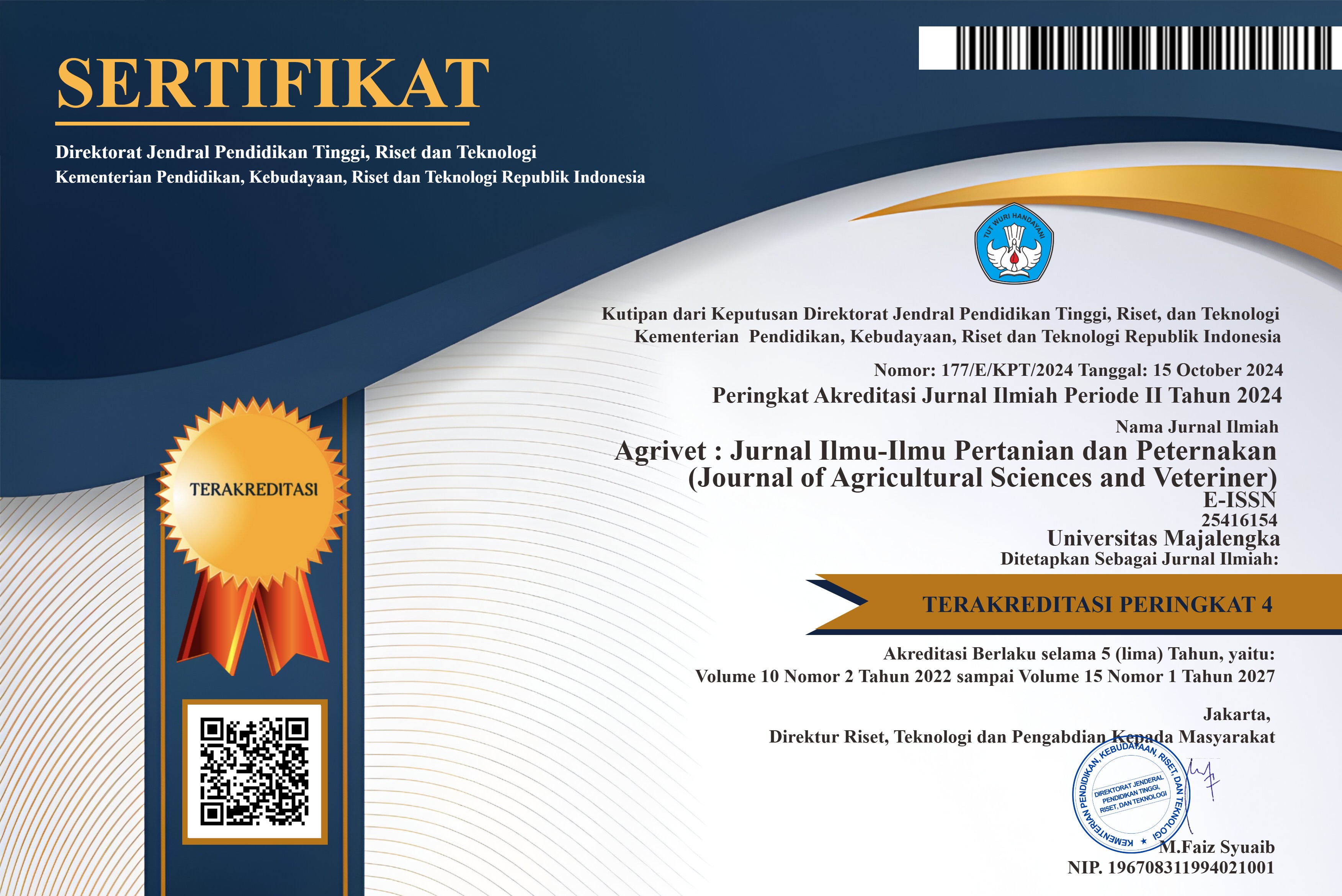Manajemen Pemeliharaan Ternak Babi di Kelurahan Tenda, Nusa Tenggara Timur
DOI:
https://doi.org/10.31949/agrivet.v11i1.5957Abstract
Pigs have become part of the socio-cultural life of the community, especially in Manggarai Regency, so they have the potential to be developed as meat producers, fund, and improve the social status of the community and support the family economy. The high potential for raising pigs in Manggarai Regency has not been supported by good and correct maintenance management. It is not yet known how the pattern of rearing pigs is carried out by the community. So far, it has only been said that the pattern of rearing pigs is still traditional. For this reason, it is necessary to conduct research to determine the management of pig farming. This exploratory research was carried out for 3 months, from January to April 2023. The research material was in the form of pig farmers as a sample of 37 respondents. The method used in this study is a field survey. Data collection includes primary data and secondary data. The results of the study showed that the management of pig farming is still carried out in a traditional and straightforward manner and can be said to be far from good and correct maintenance standards for pigs. This can be seen from the feeding which uses a lot of kitchen waste and agricultural waste as well as other feed ingredients that contain very high crude fiber. In addition, the housing system is still very simple, so it does not provide a sense of comfort for livestock and affects the growth and development of pigs
Keywords:
maintenance management, Feed and Livestocks PigsDownloads
References
Pigs have become part of the socio-cultural life of the community, especially in Manggarai Regency, so they have the potential to be developed as meat producers, fund, and improve the social status of the community and support the family economy. The high potential for raising pigs in Manggarai Regency has not been supported by good and correct maintenance management. It is not yet known how the pattern of rearing pigs is carried out by the community. So far, it has only been said that the pattern of rearing pigs is still traditional. For this reason, it is necessary to conduct research to determine the management of pig farming. This exploratory research was carried out for 3 months, from January to April 2023. The research material was in the form of pig farmers as a sample of 37 respondents. The method used in this study is a field survey. Data collection includes primary data and secondary data. The results of the study showed that the management of pig farming is still carried out in a traditional and straightforward manner and can be said to be far from good and correct maintenance standards for pigs. This can be seen from the feeding which uses a lot of kitchen waste and agricultural waste as well as other feed ingredients that contain very high crude fiber. In addition, the housing system is still very simple, so it does not provide a sense of comfort for livestock and affects the growth and development of pigs.
Published
How to Cite
Issue
Section
License
Copyright (c) 2023 Maria Tarsisia Luju, Korbinianus Feribertus Rinca, Mateus Jamin, Ambrosius Fandi

This work is licensed under a Creative Commons Attribution-ShareAlike 4.0 International License.
An author who publishes in the Jurnal Agrivet agrees to the following terms:
- Author retains the copyright and grants the journal the right of first publication of the work simultaneously licensed under the Creative Commons Attribution-ShareAlike 4.0 License that allows others to share the work with an acknowledgment of the work's authorship and initial publication in this journal
- The author is able to enter into separate, additional contractual arrangements for the non-exclusive distribution of the journal's published version of the work (e.g., post it to an institutional repository or publish it in a book) with the acknowledgment of its initial publication in this journal.
- The author is permitted and encouraged to post his/her work online (e.g., in institutional repositories or on their website) prior to and during the submission process, as it can lead to productive exchanges, as well as earlier and greater citation of the published work












